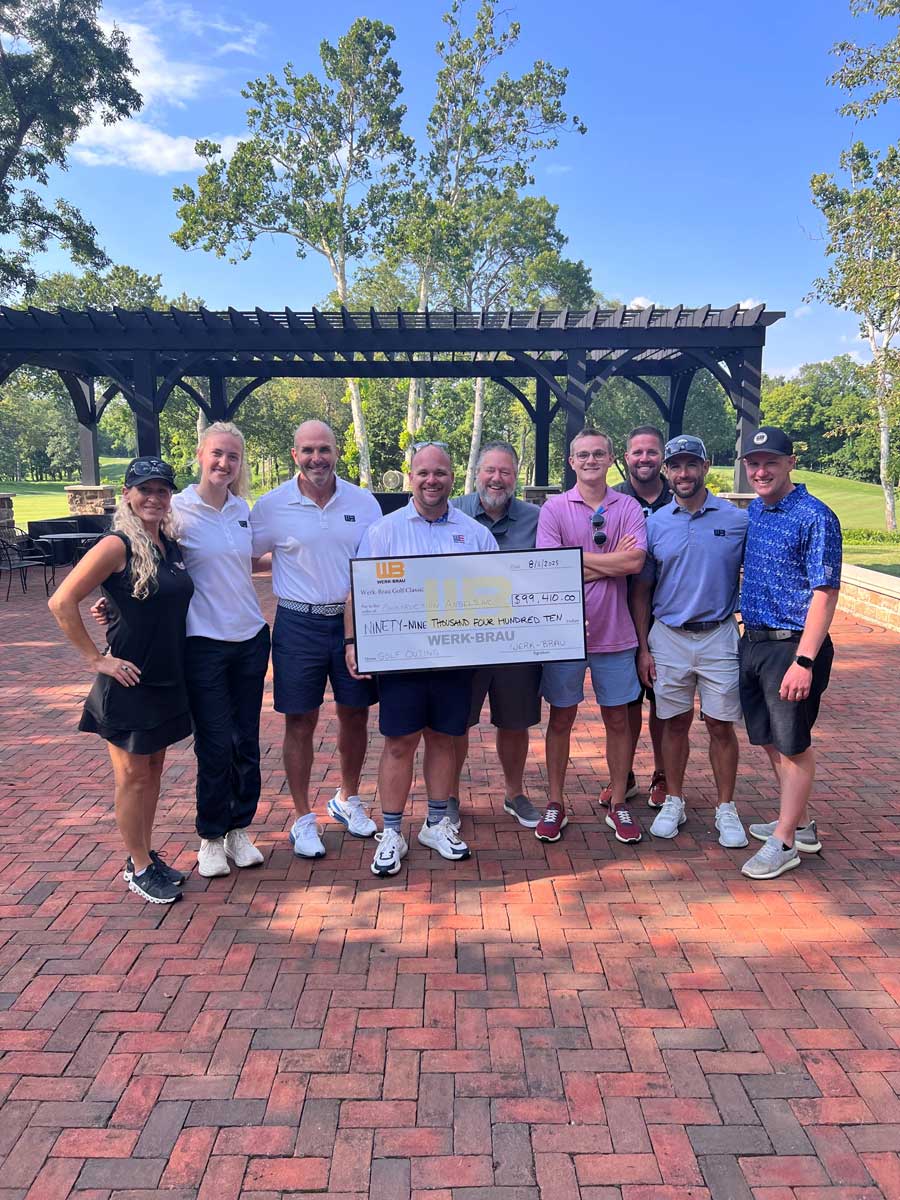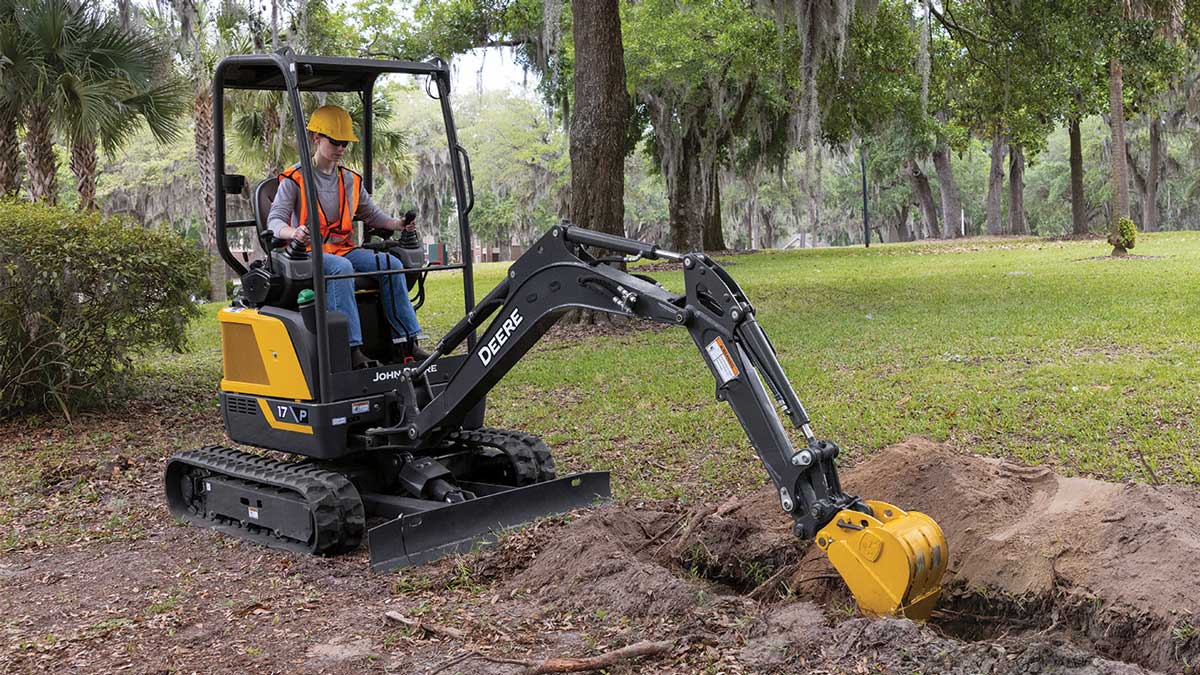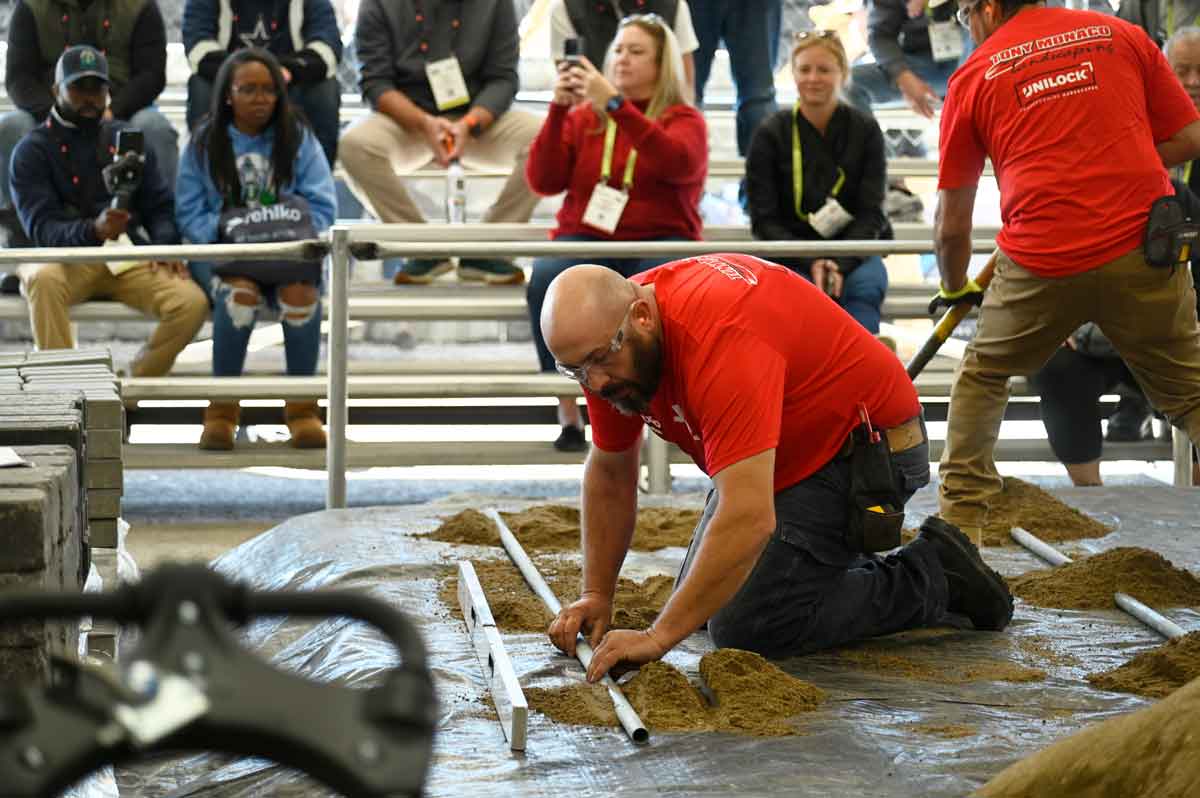Editor at Large: Operating and Analyzing Equipment at Caterpillar’s Fall Press Event
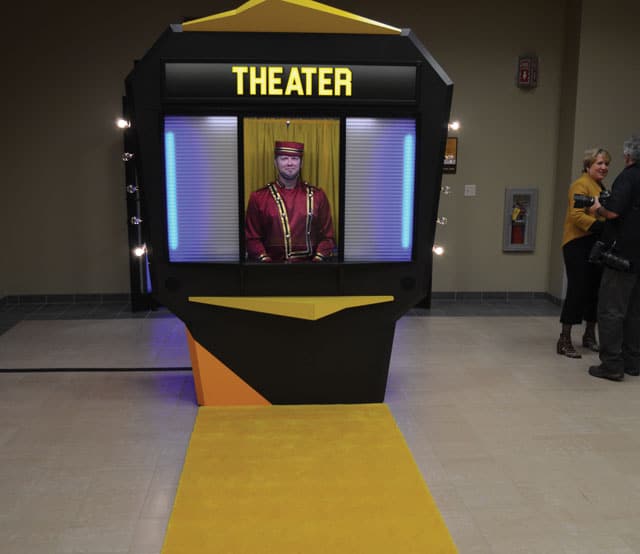
Cat’s yellow carpet premiere.
I got the official (um) yellow carpet treatment in Peoria this past November. The trade press flew in to Caterpillar’s Illinois hometown and were whisked off to Cat’s nearby Edwards Demonstration and Learning Center to examine and operate new equipment — excavators and utility vehicles specifically — as well as talk engines, aftermarket parts, inverters and loads more. The company heralded the event with a cool movie premiere theme which you can see in the photo to the right (replete with Cat yellow carpet), and the headliner for the event definitely was Cat’s new trio of excavators in the 20-metric-ton category.
“Caterpillar is proud to lead progress in the construction space, and we couldn’t be more excited about what’s coming up,” said Cat CEO Jim Umpleby in the opening presentation to the press. “One of our most exciting new products is our Next Generation of excavators. It’s our first major redesign of this product, which is a flagship product for Caterpillar, in 25 years.”

Operating Cat’s new 20-ton excavators.
Interestingly enough, that redesign feels like it’s taking Cat 25 years into the future. In fact, the philosophy behind it may affect all types of Cat machine categories, including compacts. These three new excavators are different grades of a 20-ton model unit, and while the new units are a little big for the pages of Compact Equipment, they represent an interesting new strategy for equipment lineups overall.
All three Next Generation units (the 320 GC, 320 and 323) aim to increase operating efficiency, lower fuel and maintenance costs and improve operator comfort, which is nothing new. What’s new here is that the three excavators are all engineered with what Cat calls a “digital heart” — the idea of a) using highly-efficient electronic components (like pumps and fans) to conserve fuel and make maintenance easy and b) capitalizing on “upgradable” operator tech and machine control systems (from grade control to swing fencing) that run through a user-friendly touchscreen interface in the cab.
“We’re talking 15 percent lower owning and operating costs, 25 percent lower fuel consumption, 45 percent improved operator efficiency,” said Zach Kauk, vice president of Cat’s excavation division. “How did we achieve that? We put a new, state-of-the-art digital heart in these machines. The new 320 GC, 320 and 323 all come standard with this digital heart, and all of our excavators coming out the next two years will have this digital heart as standard. Why do I call it a digital heart? For the first time in the industry, we are standardizing across our entire excavator product line with an electrohydraulic control valve, electronically controlled pump and electronically controlled engine to all work in harmony to drive lower operating costs and higher efficiency across a broader range of applications than we ever have before. No one else in the industry has done this.”
Future generations of Cat equipment (including smaller equipment like mini excavators and skid steers) may also take this ultra-efficient equipment approach, but the digital heart doesn’t stop there. According to Cat, the 320 and 323 boast the industry’s highest level of standard factory-equipped technology to boost productivity (while the 320 GC is more of a price point model). What does that mean? Well the 320 and 323 are equipped with integrated Cat Connect Technology standard, a network of smart use technology and services to improve equipment management, productivity, safety and sustainability. Both units come standard with grade guidance for depth, slope and horizontal distance via Cat Grade — a 2D system that helps operators reach desired grade quickly and accurately. Plus, the standard 2D system on the 320 and 323 can be upgraded to Cat Grade with Advanced 2D or (whoa) Cat Grade with 3D.
“No other competitor in the industry has a ready-to-go 3D geospatial machine,” noted Kauk, “and because of that our customers can transform this machine into a full 3D product at a cost well below anything our competitors can do.”
The 320 and 323 also come standard with E-fence, enabling the machine to work safely under structures or near traffic by preventing any part of the excavator from moving outside operator-defined set points. Triple plus, the two units are also equipped with Standard Grade Assist, Cat Payload on-board weighing and Cat Link telematics hardware and software to connect jobsites. But the coolest feature by far is that future technologies (say, new versions of grade control) can be upgraded and uploaded to these units digitally via the touchscreen interface.
“Similar to your iPhone or Samsung, these machines will be continuously updated,” said Kauk. “We have an annual rollout program where we’ll roll out new software with new features and functionality that use all the base capabilities of the sensors, systems and electronic controls engineered into these machines. With that, each year our customers can actually see new functionality that will make their operators be more productive.”
These digital upgradable excavators were certainly the big headliner at the Cat fall event, but the company’s newest category entry — utility vehicles — is what really got me excited about this trip initially. It seemed like a no-brainer for Caterpillar, as dealers were usually already selling another manufacturer’s UTV brand on their lots. Filling out its portfolio, Caterpillar introduced the gasoline-powered Cat CUV82 and diesel-powered CUV102D. Both units have enormous operator stations, sturdy steel beds and standard power steering (in fact, the power steering was one of the smoothest I’ve ever operated).
“Why? Why is Caterpillar getting into the utility vehicle business,” asked Norma Aldinger, commercial supervisor for Cat UTVs. “Well, the answer is simple. Not only has the utility vehicle market been growing, but it’s been growing in work applications. Also, our customers asked for us to deliver a product like this, our dealers have asked for use to deliver a product like this, so we’re delivering a product like this.”
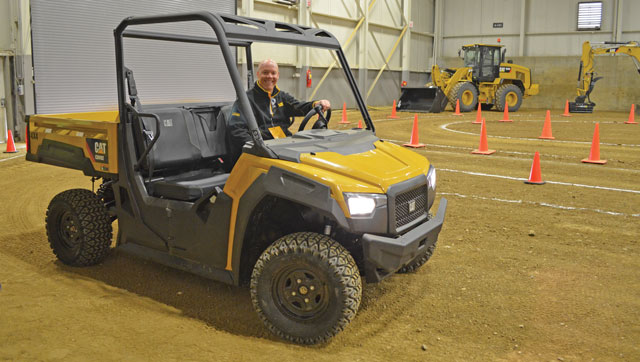
Publisher Keith Gribbins test driving Cat’s new UTV.
The CUV82 and CUV102D offer 1,000 lbs of total rear cargo capacity and 2,000 lbs of towing capacity. The gas model can reach 45 mph but can also have its speed restricted to 25 mph via a cool digital interface in the console; the diesel model only goes 25 mph. The choice of two-wheel drive, four-wheel drive or four-wheel drive/lock modes permits the driver to match vehicle drive to ground conditions. I definitely enjoyed the easy-to-use column shifter, the engine braking and the great amount of storage (the passenger seat flips to add lots of extra cab room). The unit is pretty wide, and there are definitely better turning radii on the market, but it’s a work vehicle. Like most on the market, Cat UTVs come with a slew of accessories — multiple cab options, snow plows, heater, front winch, power dump, etc.
These Cat UTVs are a partnership product with Textron, which manufactures UTV brands like Textron, E-Z-Go and Cushman, but “[Cat] started with a clean sheet design, got a lot of feedback from our dealers and customers and took the discipline and product testing and applied it to ensure the vehicle we bring to market is the reliable vehicle people expect,” said Aldinger. “We also made sure this vehicle was designed for work. This utility vehicle will have an all-steel bed to withstand work applications, a truck-style column shifter, plenty of storage behind the seat and of course you can customize this UTV with over 50 accessories that will be available.”
Rounding out this big fall premiere was Cat’s new price-point parts brand called Yellowmark. The announcement was noteworthy as a sign that Cat sees market growth in other products and brands that may not be considered premium by the consumer. Yellowmark is a line of repair and replacement parts made by Caterpillar to fit Cat machines but developed with a balance between reliability, affordability and convenience. Caterpillar also announced a new fixed-price initiative for repairs. Cat dealers have developed a range of repair options at market based fixed prices and can provide quotes on these repairs to customers within 24 hours. Yellowmark specifically offers a lower cost alternative to Genuine Cat Parts and Cat Reman Parts, and the line will eventually include more than 5,000 heavy equipment parts for small- and medium-sized Cat construction equipment. It’s a sign of our times.
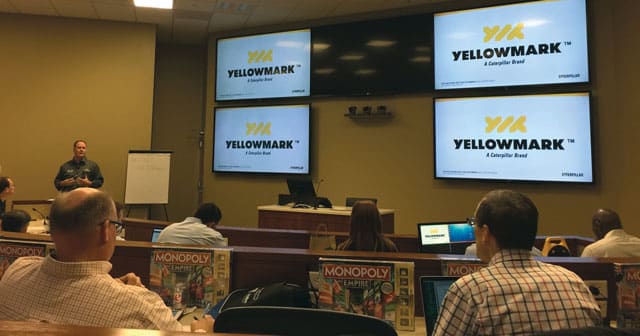
Yellowmark is Cat’s new price-point parts brand.
“You have economic and business cycles getting shorter and a lot more unpredictable for customers,” explained Nigel Lewis, vice president of Cat’s global aftermarket, marketing and brand division. “That creates a lot of cash pressure on our customers, and that has caused us to think a little differently.”
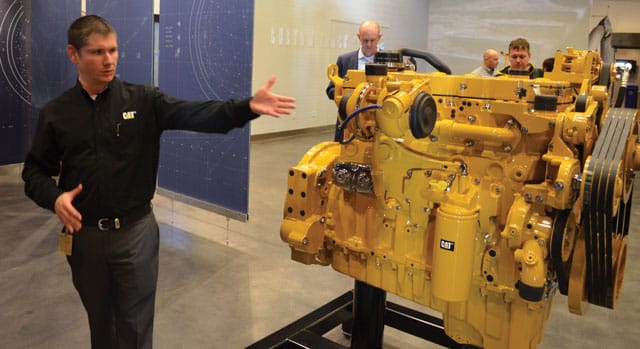
Everything from engines to invertors were also discussed at the fall press event.
Thinking differently sums up Cat’s equipment launch nicely — whether its futuristic upgradable equipment or whole new brands focused on budget-conscious contractors.
Keith Gribbins is associate publisher for Compact Equipment.


